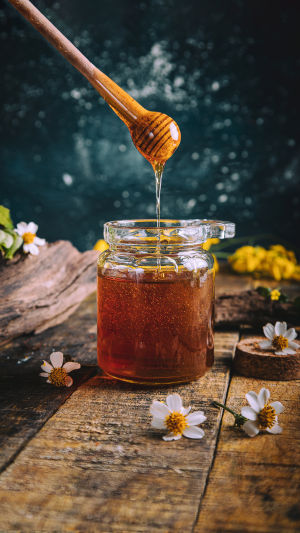Have you ever wondered how that golden, sticky sweetness in your tea or on your toast comes to be? The journey from flower to jar is a fascinating process that showcases one of nature's most impressive feats of engineering and teamwork.
Let's dive into the world of bees and discover how they create their liquid gold.
<h3>The Nectar Quest</h3>
It all begins with worker bees venturing out from their hive searching for nectar-rich flowers. These industrious insects can fly up to 5 miles from their home base, visiting between 50 to 100 flowers in a single trip. Using their long, tube-shaped tongues called proboscises, bees suck up the sweet nectar and store it in their "honey stomachs," a separate stomach just for nectar collection.
<h3>The Chemical Transformation</h3>
As the bee returns to the hive, the magic begins. Enzymes in the honey stomach start breaking down complex sugars in the nectar into simpler sugars, primarily glucose and fructose. This process, known as inversion, is crucial for creating honey's distinctive sweetness and preventing crystallization.
<h3>The Hive Handoff</h3>
Back at the hive, the forager bee regurgitates the nectar, passing it to a house bee. This younger bee continues the process, repeatedly ingesting and regurgitating the nectar, further breaking down the sugars and removing excess water.
<h3>The Dehydration Dance</h3>
Next comes a crucial step: reducing the water content. Bees spread the nectar throughout the honeycomb cells, creating a large surface area. They then fan their wings vigorously, generating airflow that evaporates much of the remaining water. This process can take several days, depending on the humidity and temperature of the hive.
How Do Bees Make Honey?
Video by Be Smart
<h3>The Final Touch</h3>
Once the nectar has been transformed into honey with a water content of around 17-20%, the bees cap the honeycomb cells with wax. This seals the honey, protecting it from absorbing moisture from the air and ensuring it can be stored for long periods.
<h3>A Hive of Activity</h3>
It's worth noting the sheer scale of this operation. To produce just one pound of honey, a colony of bees must visit millions of flowers and fly over 55,000 miles collectively. A single worker bee may only produce 1/12 teaspoon of honey in its lifetime, highlighting the incredible teamwork involved in honey production.
<h3>Top Honey Brands</h3>
While many people swear by local, raw honey, several well-known brands have gained popularity worldwide:
<b>1. Manuka Health:</b> Famous for its premium Manuka honey from New Zealand, known for its unique antibacterial properties.
<b>2. Rowse:</b> A leading UK brand offering various honey types, from everyday blends to specialty single-origin honey.
<b>3. Nature Nate's:</b> An American brand committed to providing raw and unfiltered honey, sourced from trusted beekeepers across North and South America.
The next time you drizzle honey over your yogurt or sweeten your tea, take a moment to appreciate the intricate process and tireless work of thousands of bees that went into creating that golden deliciousness. It's a true testament to the wonders of nature and the importance of these vital pollinators in our ecosystem.





